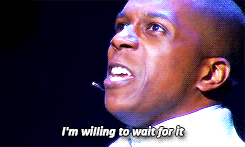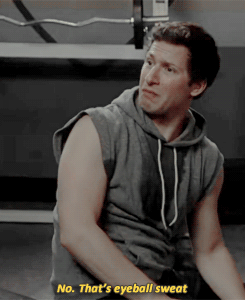Jack Viertel’s The Secret Life of the American Musical (hat-tip to the fabulous Kim for the recommendation!) isn’t a history of the American musical — a thing about which I would not care at all1 — but rather a dissection of what goes into making it.

Viertel breaks down an array of musicals, from Gypsy to Hamilton, into their component parts to explore what makes their engines run. Some of this I was already familiar with, like the not-a-rule-but-sort-of-a-rule that the protagonist has to sing an “I Want” song early on, to get the audience on board with whatever the stakes are going to be for this particular show. Another recurring pattern I’d never thought about is the inclusion of a villain anthem somewhere in the first act, to keep us interested in what the antagonist is up to and how his/her desires are ultimately going to clash with those of our hero.

Interesting, right? Of course, none of these rules are really rules. They’re commonalities across a wide range of musicals, and the reason they’re so common is that they convey story beats and keep audience interest engaged as the writers try to tell a two-and-a-half-hour story and keep the audience from peacing out at intermission and not lose the energy in the room — it’s a balancing act, and the “rules” Viertel outlines are some common ways that writers of musicals have found to keep all the balls in the air.
One thing that Viertel highlights is the way many musicals will feature a quiet moment between a few characters, maybe a brief line of music or a few lines of dialogue, that encapsulate exactly what the show’s about (often in a question-and-answer format). I got starry-eyed reading this section because, of course, his examples are some of the best moments of some of my favorite musicals. Like little Winston asking coldly, “What band?” and Harold Hill replying, “I always think there’s a band, kid.” Or Doc, in West Side Story, demanding of the Jets, “When do you kids stop? You make this world lousy,” and Action answering, “We didn’t make it, Doc.”

Be prepared, though, if you are a musicals nerd (and if you’re not, I’m — not sure why you’d be interested in this book? But what do I know.), to end up with all kinds of songs stuck in your head. You know what’s a catchy fuckin song? “Adelaide’s Lament.”
There. It’s stuck in your head now too.
If I could just flag one thing that made me sigh, it would be this description of Hamilton:
“My Shot” happens in a context that we barely recognize as American musical theater–the actors are dressed in costumes that might have been preserved from a production of 17762, but from the neck up they look like a motley gang of street-corner revolutionaries in the Bronx in 2015.
You mean, not white? Is whiteness what makes something recognizable as American musical theater? Piss off.
Apart from that one extremely sigh-worthy moment, The Secret Life of the American Musical was a fascinating book. Much recommended!